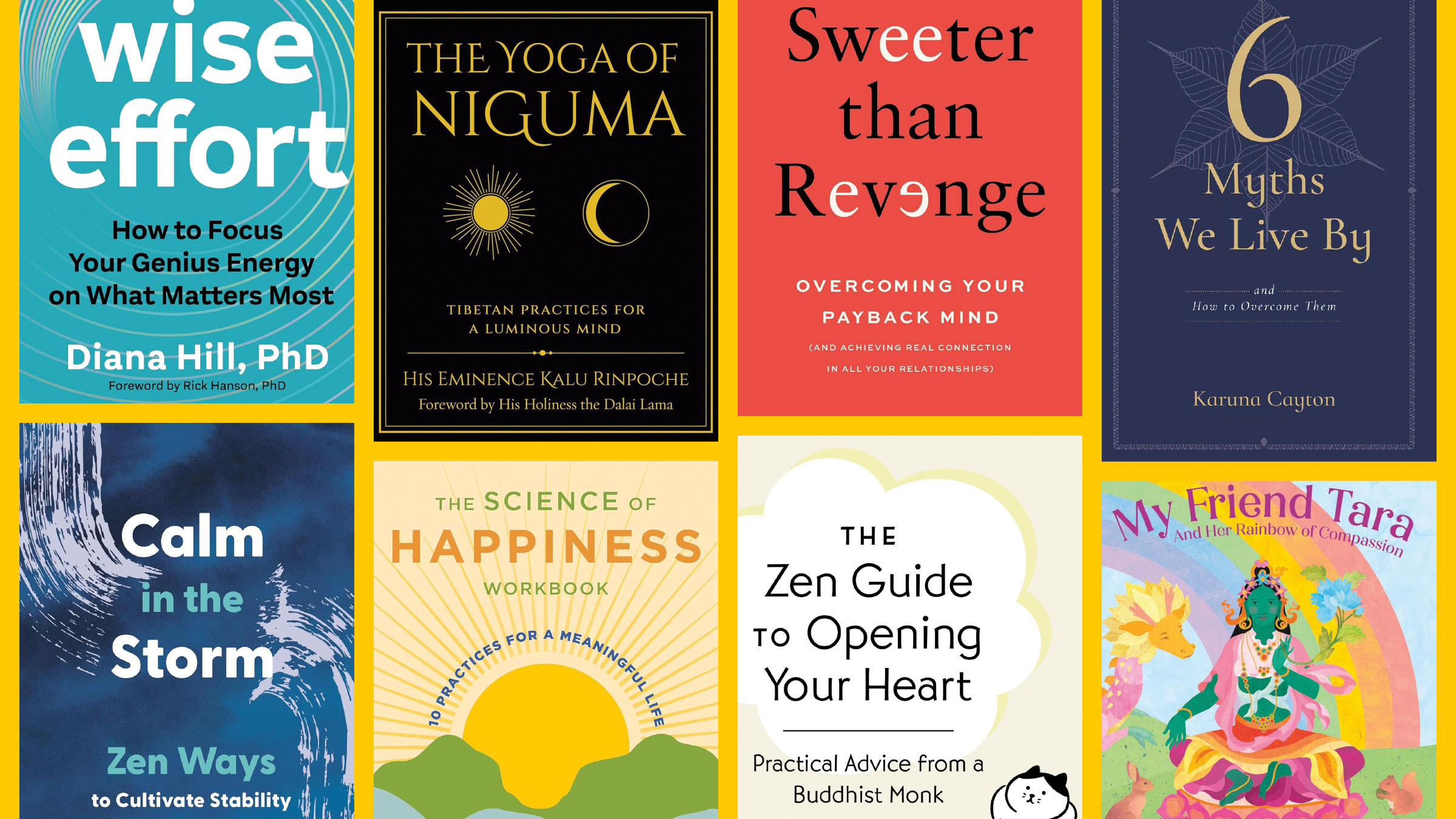The Dharma of Popular Music
An exercise for mindful listening, because even where you least expect it, music can present opportunities for reflection. The post The Dharma of Popular Music appeared first on Tricycle: The Buddhist Review.

An exercise for mindful listening, because even where you least expect it, music can present opportunities for reflection.
By Bradley Donaldson Jan 28, 2023 Photo by Priyash Vasava
Photo by Priyash VasavaIn 2019, I spent a breezy summer afternoon lying on the grass of a local park, nodding my head to Lana Del Rey’s just-released album. That day would turn out to be emblematic of much of my summer: wistful and pensive, yet hopeful. My most recent romantic relationship had unraveled, and the album was a soothing balm; I listened to it on repeat, daily.
The fourteen-track record turned out to be Del Rey’s most critically acclaimed album to date, a collection of music exploring the longing and loss often associated with heartbreak. What I felt from her work was immediate comprehension: someone, somewhere else, had experienced something similar to me and had put it to words and music.
Being seen in this way wasn’t a new feeling. In fact, I often felt that tingle of recognition when studying the dharma. The very first words I’d read from Thich Nhat Hanh, back in 2015, had readily imprinted on my heart: “Everything is impermanent. This moment passes, that person walks away. Happiness is still possible.”
Once again, I was suffering deeply, and all the teachings said, “Yes, you are suffering. Every being experiences pain. Here’s how you can hold it.” That’s why the first noble truth, the truth of hurt, was so powerful to me. Instead of putting on a brave face and denying my struggles, I acknowledged my difficulties. It was not shameful to do so. In fact, Buddhist wisdom normalized it.
To this day, that’s what draws me to dharma and music alike—that commitment to understanding oneself and the world. For me, the two have always been complementary.
It is true that popular music “tends to offer the lozenge of amnesia to just about everyone,” as music critic Daniel Felsenthal writes. And sometimes what we want and need is to lose ourselves in a rhythmic, three-minute summer bop. But there’s much more to pop music than that. Indeed, the kind of songs I’ve often gravitated toward encourage listeners to shine a light on their experiences, without shame and without fear.
Like the dharma I’ve studied, pop music can motivate us to open our eyes and recognize the joy and pain of living in a world we cannot control very much or very well. Its best songs are about celebration, heartbreak, loss, healing, and acceptance, and how music has the power to help us feel less alone.
A Dharma Dive into Some of My Favorite Recent Songs
Take the four recently released songs below. Each one contains its own dharma themes, if you know where to look—or listen. Hear them out yourself, and then check out this extended playlist for songs I think are ripe for mindful listening.
Ancestress, by Björk: “When you die / You bring with you what you’ve given”
Death, of course, is a perennial topic in dharma and music alike. We have countless records of humans grappling with the mystery and awe of death, both in the Buddhist texts and in the arts. In “Ancestress,” Iceland-born Björk grapples with the passing of her mother. But amidst gripping instrumentals and stark vocals lies a reference to karma, the push and pull of our lives. This isn’t the everyday, tit-for-tat understanding of karma, but rather the recognition that what you’ve given in life weighs on you at the end, as light as a feather or as heavy as mud.
Hold the Girl, by Rina Sawayama: “The girl in your soul’s seen it all, and you owe her the world / So hold the girl, hold the girl”
When I first heard this song from Japanese-English artist Rina Sawayama, I felt goosebumps. It may have been Sawayama’s soaring vocals or the song’s orchestral arrangement, but more likely it was the metta, the lovingkindness, that came bubbling up. The song is all about loving oneself after a long period of neglect, about the kind of metta practice we too easily forget: the one directed at ourselves.
SAKURA, by ROSALÍA: “Cherry blossom, cherry blossom / Being a popstar never lasts”
In Buddhism, impermanence is considered one of the aspects of existence: Everything changes, at one point or another. In “SAKURA,” this isn’t a cause for lament but rather a call for tenderness, as the Spanish musician ROSALÍA sings. With the time that we have, why not make the best of it, with a heart full of love and courage?
Washed Away, by Kelela: “Moving on, a change of pace, and I’m / Far away”
If you’ve ever been on retreat, you may have experienced the feeling of coasting that comes up once you’ve hit your stride, a feeling that “Washed Away” evokes so well. Lyrically sparse, the song says so much. The artist herself called the song an “ambient heart-check,” about cleansing and renewal, especially for marginalized folks who have been hurting for so long. To me, that sounds exactly like what retreat is for: stepping away to reset and refresh and possibly set the ground for change.
What themes arise when you think of your favorite songs?
Being Mindful with Music
Here’s one method of listening to music while keeping dharma practice in mind. It is best if you find a quiet enough space where you can listen attentively, whether with headphones or a suitable speaker. If you have room for reclining or spontaneous movement, even better.
The first step is to pick a song. Listen to it once, from start to finish, with your eyes closed. Don’t listen for anything in particular. Instead, pay attention to whatever arises in your body and mind. These could be sensations, emotions, memories, or images. Whatever comes up, just watch it come and go. Once the song is finished, either keep in mind or jot down any thoughts you have about the experience. Be brief. How did you feel while listening? What about the song had a particularly significant effect on you? Listen to the song again. This time, pick something particular to focus on. Perhaps the lyrics, the vocal performance, the beat, or the instruments. It’s your choice. Keeping in mind that artists are intentional about their work, consider what effect your area of focus has on you as a listener or what the artist may have been trying to evoke. Again, once the song is over, write down any thoughts you have. Look at all your notes and consider what dharma themes emerge. These don’t have to be direct correlations; they can be little resonances or connections. On subsequent listens, choose something different to focus on and see what comes up. And don’t forget to enjoy this practice! It is one of discovery and play.![]()
Thank you for subscribing to Tricycle! As a nonprofit, we depend on readers like you to keep Buddhist teachings and practices widely available.
This article is only for Subscribers!
Subscribe now to read this article and get immediate access to everything else.
Already a subscriber? Log in.

 Aliver
Aliver 
































